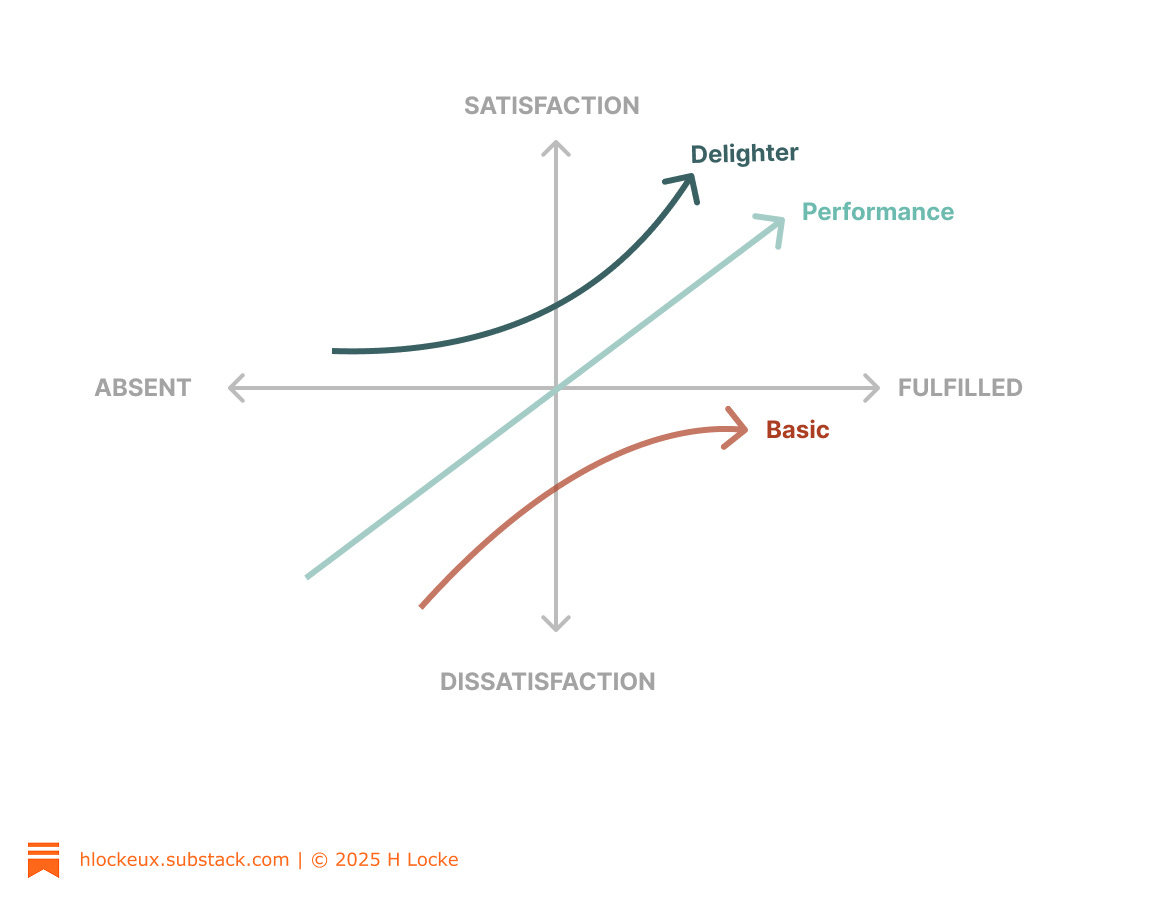The Kano Model
Prioritisation tools for designers - Part 2
Welcome to the second part of my mini-series on prioritisation tools.
If you haven’t already, you can follow along by subscribing. I’m also going to release a FigJam workshop kit for paid subscribers.
Method 2 - The Kano Model
The Kano model is used for identifying features that will drive customer satisfaction. So it’s ideal for helping Product Managers and Product teams prioritise features and updates based on customer needs.
(For the geeks, the Kano model was created by Japanese researcher Noriaki Kano in the 1980s).
It categorises features based on five types of customer responses:
Basic - things you must include when entering the market, because are the fundamental features that customers take for granted. If you don’t have them, it will cause dissatisfaction. However having them doesnt necessarily increase satisfaction above a basic level.
Performance - that increase customer satisfaction as their performance improves such as speed of messaging, amount of file storage
Attractive (Delighters) - things that are unexpected and generate delight. Customers don’t know they want them until they have them.
Indifferent - things customers don’t care about, that will have no impact on purchase or engagement
Reverse - things that will dissatisfy your customers, but getting rid of them will satisfy them more.
The task with this model is to take features, categorise them as above, and focus on delivering the top three categories of features.
Pro’s and Con’s
The Kano Model is useful for Product Managers or Product Teams prioritising feature development, looking to improve customer satisfaction, or evaluating new product opportunities.
It is very customer-first, so that has to be the intent up front. It also requires a deep level of customer or user understanding, so don’t use it with stakeholders who are prioritising their own agenda.
It requires a large amount of data and insight in order to know which category is appropriate for each feature - so it’s not something you can run spontaneously in a workshop and expect an accurate outcome.
And finally, it’s also for small items or features, so it’s not going to help you if you’re trying to prioritise entire propositions, strategies or business process redesign.
Or is it…?
Kano Model for Service Design
As I’m currently working in Service Design, I was interested in potential applications for Kano as part of Service features rather than Product features.
As it turns out, there is a use case, which is around customer service experience optimisation.
By mapping a current state service blueprint, identifying pain points via CX data, and competitor or industry benchmarking, you can develop theme areas for the 5 feature sets above. You can use card sorting style customer sessions (in person and online survey versions) to understand rankings. These can then be mapped into a future state journey where they are prioritised with stakeholders based on likelihood to improve metrics.
So cool.
I’m going to create a full methodology guide to this approach in a future article, so be sure to subscribe and it should be delivered directly to your inbox.


